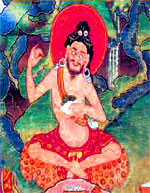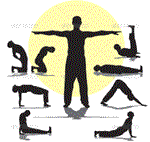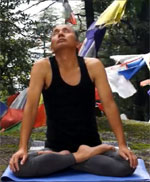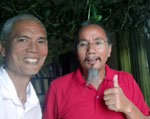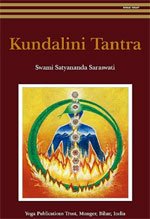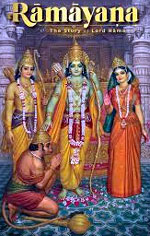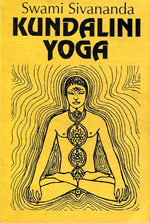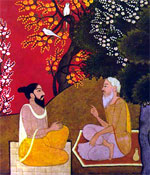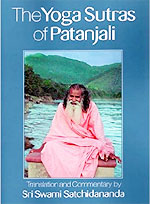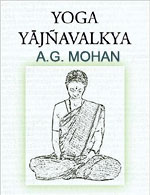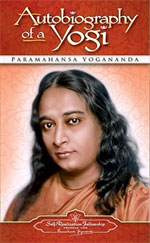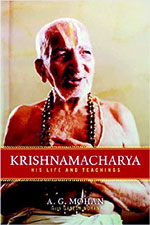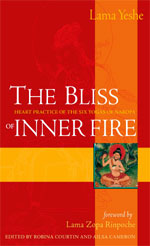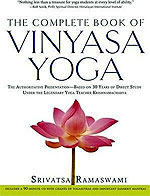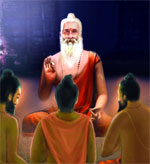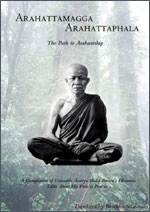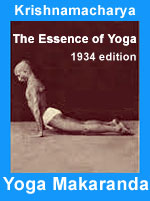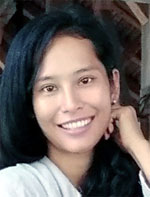
Tibetan Yoga (Yantra)
Blogs About Tibetan Yoga (Yantra)
Yoga Book Reviews
YOGA Book Reviews
FREE online books
BooksFree.org | Project Gutenberg | Open Library | ManyBooks | Free-eBooks.net | Bookboon | Smashwords | PDFBooksWorld | PDF Drive | Google Books
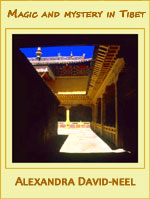 Jun 12, 2022
Jun 12, 2022
Magic and Mystery in Tibet
Author: Alexandra David-Neel (1868-1969)
Genre: Travel, Adventure, Spirituality
Pages: 198
Country: UK
Publisher: Penguin Books
Publication date: 1931
Rating:
![]()
![]()
![]()
![]()
![]() (5 out of 5 stars)
(5 out of 5 stars)
Buy the Book: Amazon
Buy the Audio Book: Audible
Read the Book: Goodreads
Tibetan Dictionary
source: Tibetan Buddhist Encyclopedia
- Angkur - the rite by which a peculiar power is communicated by the master to his disciple
- Chorten - a burial monument similar to the stupas of the Buddhist
- Dokpa - herdsman
- Dubchens - like gomchens, they are possessed with superhuman powers
- Dubthab - rite, which could also be a magical practice. Dragpoi dubthab is a magical rite that brings death or injury
- Gelugspa (Yellow Hat) - better known as the 'Yellow Hat' tradition, founded by Lama Je Tsongkhapa
- Gomchen - powerful tantric practitioner of Tummo Yoga
- Jetsunma - "reverend lady", a very polite term of address for a nun of high rank
- Karnapa (Red Hat) - 'Red Hat' tradition
- Khadoma - fairy/deity often disguised as an elderly woman. Often, they are teachers of secret doctrines in mystic lamaism
- Kang Tise - Tibetan name for the sacred Mount Kailash in western Tibet
- Khorlos (chakras) - energy centers in the body designed to redirect energy to the dabtong (sahasrara chakra). This practice is almost exclusive to the lamas of the Dzogschen sect
- Kyilkhor - usually circular mandala, but those used in black magic are triangular. Diagrams drawn on paper or material, or engraved on stone, metal or wood. Drawing it is part of the lamaist magical rite
- Lung-gom - a spiritual practice consisting of mental concentration and breathing that develops nimbleness and ability to run faster than a horse for days without rest. Devotees who practice this discipline are known as lung-gom-pas
- Mophang - a sacred lake near Mount Kailash
- Naljorpa - an ascetic possessing magical powers
- Niampar jagpa - "to make equal," "to level" – meaning calming down all causes of agitation that roll their "waves" through the mind. This is a state of being in preparation for meditation
- Ngagspa - magician, assimilated to the official clergy, believed to be more skilful in dealing with the demons who harm living beings or the spirits of the dead
- Philing - foreigner in general, specially to Englishmen except Russians, whom they call Urusso and not Philing
- Phurba - ritual dagger with powers that are weaponized
- Respa - a tummo adept who wears a single cotton garment in all seasons and at any altitude. Some respas go beyond, wearing nothing at all in the sub-freezing temperatures
- Rinpoche - "precious one", a very polite word to address a lama
- Ritod - a type of tsams practice but located far from a monastery. It is either a hut or a cave perched high on a mountain behind a rock or by a lake. A resident (ritodpas) can choose to remain in silence
- Sannyasin - an ascetic who renounced the world entirely
- Siddha - possessing superhuman powers
- Thags yang - a demon who generally appears under the shape of a tiger
- Tharpa - supreme liberation, enlightenment
- Trapa - low-ranking student monk, usually a disciple of an established lama
- Trong jug - ability of the spirit to enter someone else's body and take over. Marpa, the translator, had to take a journey to India with Milarepa to learn this teaching as Marpa's guru, Naropa, did not teach it
- Tsams - a practice where one lives (a tsamspa) in seclusion within a dwelling's 'boundaries', to deepen a spiritual practice. Depending on the austerity, the tsams can be a room, an apartment near or within a monastery where he can or cannot receive visitors. If the dwelling is far from a monastery, it is called a ritod.
- Tsas - Tibetan for nadi or non-physical psychic energy channel - roma (pingala, male, right channel), kyangma (ida, female, left channel) and uma (central, sushumna)
- Tulku - a high ranking lama regarded by foreigners as a 'living Buddha'. Tulkus often create a tulpa (a ghost created from pure thought). When the tulku dies, the tulpa is realized and live life as a tulku. So, the question is, is the tulku a real person? Or a realized ghost created by a real tulku?
- Tulpa - a type of ghost or being that is created through mental effort, purely from the thoughts of its creator, who is a tulku
- Yidam - a tutelary deity meditated upon by a novice, usually within a kyilkhor (mandala) inside a tsams (isolated meditation dwelling). A yidam is viewed 2 ways. 1) a creation of the mind and has no objective existence, or 2) an emanation commanded by the mind to protect the author
English Dictionary
- anchorite - someone who withdraws from secular society so as to be able to lead an intensely spiritual or ascetic life
- baneful - destructive, seriously harmful
- credulous - disposed to believe too readily; gullible, apt to believe on slight evidence; easily imposed upon; unsuspecting
- emaciated - having become so thin that the bones noticeably protude under the skin, especially from hunger or disease or cold
- earnestness - seriousness and zeal in intention, purpose, or effort
- erudite - learned, scholarly, with emphasis on knowledge gained from books
- impalpable - not perceptible by touch, not necessarily compresensible or knowable
- imprudent - unwise, indiscreet, not attentive to consequence, improper
- incredulity - skepticism, distrust, doubt
- itinerant - traveling from place to place, journeying
- lugubrious - gloomy to an exaggerated or ludicrous degree
- obstinate - Stubbornly adhering to an attitude, opinion, or course of action
- profane - irreverent, secular instead of religious, godless
- prosaic - lacking the wonder of poetry, therefore dull, dry, unimaginative
- redoubtable - formidable, especially as an opponent. e.g. - "he was a redoubtable debater"
- reticent - not revealing one's thoughts or feelings readily
- simpleton - a person whose foolish actions are the subject of often-repeated stories
Book Summary + Appendage
This is a book summary of every chapter, instead of a book review. Why summarize an entire book per chapter? This is how I learn. If I can rewrite the book in my own words, then I know I understood the book. Furthermore, I can enhance the content by landmarking her destinations and embedding it on a Google Map - this gives geographical bearing to the reader and me. I also cross-referenced her exploits with Wikipedia to add travel dates.
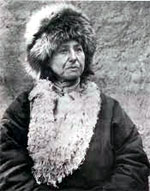 Alexandra David-Neel
Alexandra David-Neel
(Oct 24, 1868 - Sep 8, 1969, age 101)
This semi-biographical Buddhist/adventure book is an account of Belgian–French explorer, Alexandra David-Neel's 14-year sojourn in the hinterlands of Tibet back in 1924 when it was virtually forbidden, unknown, and shrouded in mystery. She was the first European woman to explore the then-forbidden city of Lhasa.
She recounts her impartial account of the metaphysical events she observed during the 1920s among the mystics and ascetics of Tibet which includes casting magic spells, running faster than a horse for days without getting tired, levitation, telepathy, the ability to walk on water, and generating body heat in sub-zero temperature.
She wasn't just an explorer, she was a Buddhist devotee, an iconoclast, an opera singer, a writer, and a respected member of polite society. She wrote over 30 books and influenced beat writers Jack Kerouac and Allen Ginsberg, philosopher Alan Watts, and esotericist Benjamin Creme.
Landmarks on Alexandra David-Neel's Route ![]()
AUTHOR'S PREFACE
The reason Alexandra wrote this book is 2-fold.
1st is to answer the consistent public question of how on earth she ended up in Tibet
2nd is to story-tell supernatural phenomena she witnessed in this land of mysticism.

1911–1925: The Indo-Tibetan expedition
I TIBET AND THE LAMAS
Chapter I
Kalimpong (1912)
In Kalimpong, she was escorted by her interpreter, Dawasandup. He was not just an interpreter but also a wannabe occultist and an aspiring mystic.
Alexandra met with the Dalai Lama in Bhutan where he initially advised her to learn the Tibetan language. He was astonished that a female Westerner would know Tibetan Buddhism. She witnessed how the Dalai Lama attended to those who wished to be blessed - by tradition, he had to touch every single one of them for his benediction.
She met with an ascetic who mocked the Dalai Lama for dispensing benediction while having no power to stop the Chinese incursion into his land.
Gangtok
Alexandra continued her travel from Kalimpong to Gangtok where she arranged to meet with the prince of Sikkim, Prince Sidkeong Tulku. Sikkim is a poor place where trapas (monks with lower status and not technically regarded as monks) are more concerned about economic survival than spiritual upliftment. They rejoice when a rich man dies because the death rituals involve offerings of meat to the monastics. In this land of mysticism and occultism, the lamas are usually in friendly competition with the sorcerers especially when officiating the death rituals. Lamas call out a shriek to draw the dead's spirit out of the body and redirect it to the rightful destination.
The prince has two other intellectual guests which delighted Alexandra. One was a doctor of philosophy, Kushog Chosdzed. His memory and understanding of Buddhism, Lamaism, and Tibetan history were uncommon. He came from the Gelugspa tradition, better known as the 'Yellow Hats', founded by Lama Je Tsongkhapa.
The second guest was a learned lama from the Karnapa tradition, or the 'Red Hats', Bermiag Kushog - a fluent orator. He was nobility and a celibate.
Gomchen of Lachen
After Gangtok, Alexandra passed through Lachen, a northern-most village in Sikkim, where she met a Tibetan gomchen (powerful tantric practitioner of Tummo Yoga) who once lived in a cave high up on the mountains for 17 years. He is said to fly through the air, work miracles, and kill men from a distance. Even demons obey him. She wanted to ask many questions but her interpreter was not up to the task. Alexandra would have many more episodes with the Gomchen of Lachen .
II A GUEST OF THE LAMAS
Chapter II
Podang (Phodong)
Prince Sidkeong Tulku, now the new maharajah after his father's death, invited Alexandra to stay in one of his houses in Podang, just 10 miles north of Gangtok. There, she witnessed the annual Ceremony of the Demons done in the shadowy forests of the Himalayas (compared to the manicured fashion it's done in Tibet). An imported deity from India, the Mahakala, profanely regarded by Tibetans as a mere demon (while in India, the Mahakala is an extension of the Shiva), is taken out of its hidden storage, to the unsettling fear of the peasants for its power and malevolence.
A learned lama popularly called "the gentleman from Tibet", Bod Kushog, belonging to a wealthy family of Sikkim, had just returned from Tibet. He became the new abbot of the monastery of Rhumteck. The monks doubted his power and thus asked the Gomchen of Lachen to conduct a ritual to assure their well-being.
Kali Kumar, an Indian monk was commissioned by Maharaja Tulku to ween the peasants and the lower clergy from their occult practices, drunkenness and cult of spirits, by being introduced to traditional Buddhist Theravada teachings. In a gathering with Tulku, Alexandra and Kumar, a telepathic voice was 'heard' by everyone saying that the conversion will never succeed. Shortly after Tulku died, everyone reverted back to their traditional practices. The 'voice' was right. It wasn't clear whose 'voice' they heard.
While in Podang, Alexandra met 2 gomchens from East Tibet. One of them was Sakyong Gomchen, who would go to cemeteries and isolate himself in his house for months to deepen his magic powers. He subscribes to the 'short path' to enlightenment, which he encouraged Alexandra to take on. He had great oratorical skills which were evident when he would go about preaching.
The other gomchen she met was Daling Gomchen, a snobbish and uncommunicative monk who would spend the entire summer up in his house in the mountains. Natives fear his power and influence over demons and evil spirits. In a gathering, Tulku expressed to Daling how he wanted to meet Daling's mentor for an answer to his question. Daling, in a seance fashion representing his guru, gave an answer that proved prophetic.
On the way back from Nepal with Maharaja Tulku, they captured the 2 hermits known in the area that no one had seen in years. They were offered a lavish amount of food but none would talk, perhaps due to a vow of silence. Alexandra intervened with Tulku to give the hermits a reprieve. Before leaving, the hermits have her an amulet as a token of gratitude. With it, she had the company of a demon who will look after her well-being.
Chorten Nyima Monastery
Alexandra was advised to visit Chorten Nyima, a monastery on the Tibetan border that resembled the traditional monasteries of Tibet instead of Sikkim. The monastery was so high up and isolated that made it feel forbidding. It was in disrepair with only 4 celibate nuns in residence. Legend has it that an apostle of Tibet, Padmasambhava, hid some mystic doctrines in the vicinity because no one was ready for it. When the time is right, it will be found. For anyone to have chosen this life of isolation and solitude was beyond the norm, even by Tibetan standards. One of the nuns intimated that the lama of Chorten Nyima lived in Tranglung and wields great power - he summoned birds to attack some disobedient peasants. Since then, no one dared to defy him.
Gomchen of Lachen's Hermitage (1912-1916)
From a few days' stopover at Thangu at a British resthouse for travelers, the Gomchen of Lachen sent over a horse for Alexandra to mount, on her way to visit him. She stayed in a cave. Even the gomchen lived in a cave, separate from Alexandra's. There, the gomchen made her a pupil on condition she never goes back to Gangtok without his permission. She passed an entire winter in her cave, completely cut off from the outside world since the valleys were not passable. During her retreat at the hermitage, she deepened her study of the Tibetan language, had long conversations with the gomchen about palaces of rich lamas, ascetics of the mountains, and Tibetan thinking and culture.
Tranglung, Tibet (1916)
Leaving the hermitage of the Gomchen of Lachen, Alexandra crossed into Tibet to Tranglung where she became the guest of the abbot of the Chorten Nyima (aka the sorcerer of Tranglung who changed ceremonial cakes into birds of attack). Even though Tranglung wasn't too far from the border, the people and look of the place looked distinct. It was a reminder that she was really in Tibet and no longer in Sikkim, India. She was surprised to find Tibet more civilized and developed.
A highlight during her stay was to be consulted over a family dilemma where an arranged marriage took place having 4 brothers (sons of the sorcerer) take on the same wife. The manipulations behind the scenes resembled more an afternoon Hispanic teledrama than monastic existence in a holy land.
Tashilhunpo Monastery, Shigatze
Continuing her travel north, she finally came upon the Tashilhunpo Monastery in Shigatze where she cleverly invited herself as a guest (instead of seeking lodging in the public inns). The monastery was opulent, lavish, and decadent, as it was kitsch. All the ornate appointments were rather unrefined.
The abbot of the monastery was the Tashi Lama. He holds a spiritual rank equal to the Dalai Lama except that he is not the temporal head of Tibet (political power vs spiritual power), thus he has to take a lower stature.
Being a woman traveling alone (plus guide and servant) and taking residence in a mountain hermitage made Alexandra a kind of local celebrity. She quickly became endearing to the Tashi Lama and his mother. She met the masters who educated the Tashi Lama. She was given a tour around the temple, which was then under-construction, for the prophesied Buddha, Maitreya.
She received word that she was to leave Tibet, as she was never authorized to cross the border. Experiencing the scholastic Shigatze, its monastic universities, and its immense libraries, whetted her appetite for Tibet. But now, she had to leave.
III A FAMOUS TIBETAN MONASTERY (KunBum Monastery)
Chapter III
Global Travel
Leaving Tibet was to cross back into northern India. It was WWI and going back to Europe was impossible. Her continuing travels took her to Burma where she met contemplative monks, and was introduced to austere Buddhist sects. Her travel to Japan gave her a dive into the Zen sect and its intellectual aristocracy. She went on to Korea where she stayed at the "monastery of wisdom" hidden deep in the forest. There, they would be awakened at 3am to begin their day of 8 hours of daily meditation.
Peking, China
In Peking (now named Beijing), she stayed in a Buddhist monastery that used to be an imperial mansion.
There, the Kumbum Monastery of Tibet called to her and she decided to travel westward across China into the Mongolia Gobi desert until she reaches the Eastern border of Tibet.
En Route to Tibet
From Peking, she joined 2 rich lamas and their caravan en route to Tibet. The trip was amusing. She witnessed the lama haggling with prostitutes, the same lama confronting Chinese soldiers, traversing areas of conflict, coming to the aid of wounded men left for dead, seeing decapitated heads hanging by her inn's door, and witnessing armies storming a city wall. In Shensi (Peking), she recalled having tea with the governor and his guests while the city wall was being stormed. Everyone was calm and smiling, intellectualizing their subtle thoughts about the subject in discussion, almost oblivious that the enemy at the gates might actually succeed in the siege.
She recollects the Chinese as lovable, endearing, refined and civilized despite their faults!
CROSSING THE BORDER FROM CHINA INTO TIBET
Kumbum Monastery, Tibet (1918-1921)
Finally, Alexandra reaches Amdo, Tibet, location of the Kumbum Monastery. At one gathering attended to by thousands of monks from different sects in a ceremonial grandeur, she saw money liberally donated by Mongolian pilgrims to the monastery. Rich sponsors, visiting pilgrims or rich lamas of a famous monastery would, on occasion, host lavish breakfasts. This gives an idea of austere monastic life in such monasteries - nuanced philosophy, pragmatic commercialism, transcendent spirituality and eager pursuit of earthly pleasure by a mixed gamut of a literate minority, a mass of idle, dull, sleepy characters, loud braggarts, and select mystics who take refuge in lonely hermitages immersed in life-long meditations. For the most part however, Tibetan monastics reside inside their own minds.
Tibetan monasteries are a thing of their own, in comparison to Buddhist monasteries. In Tibet, monasteries are often found in remote isolated mountain tops where they are ravaged by the elements and the cold. They depict a disquieting air of occult mysticism and a forbidding atmosphere where only the intrepid may dare.
Once, she witnessed a whipping by an 'enforcer' of some grown-up lamas who were in private conversation while everyone else was in devoted silence on one such breakfast.
Kids, aged 8 to 9 who are destined for monastic life are entrusted as wards to monks belonging to the same clan. The novice is given a teacher who usually becomes his teacher for life. Rich parents can, however, entrust their sons to a learned monk. Boys from poor parents become servants and do menial work for teachers who are probably illiterate and cannot impart much teaching.
Large lamaseries have colleges where novices can take higher learning when they get older. There are 4 colleges:
- Tsen Nid College offers Philosophy and Metaphysics. While the emphasis is on being able to quote passages from sacred texts, some students develop subtle thinking and bring insight from descanted old texts. Impassioned debates are part of the tradition. The monks go into theatrical gestures and movements as they do so, resembling an act in a play. I have personally witnessed this when I was in Dharamsala at the compound of the Dalai Lama. It was an afternoon ritual that happens on the outdoor veranda.
- Gyud college offering Ritual and Magic - yes, a specific study on magic!!! The fellows, called gynd pas are held in high esteem. They are said to propitiate the deities and subjugate the evil spirits (or put them in captivity). They protect Tibet and the monastery during bad times and serve its interest during good times.
- Men College offers Medicine, according to Chinese and Indian methods
- Do College offers studies in Sacred Scriptures
Spiritual Aim is the common denominator amongst the monks. While lamaseries house monks for their spiritual aim, this spiritual aim is deeply personal and different from person to person. The lamaseries, while having their in-house rules and policies about monk behavior, conduct, and attendance to scheduled meetings, they do not impose, ask or define what the monks' spiritual aim is. The monks are free to pursue their secret objective as they see fit without the need to tell anyone, not even their teacher.
Monks do not live in a community within the monastery, instead, they live in their own dwellings according to their means. Having a vow of poverty isn't given special status (unlike in India). It is even regarded as an eccentricity. Learned but poor monks make a living as teachers in whatever field they excel in (astrology, painting, etc.). Lama doctors always make good money even if they are mediocre. The most desired profession of a lamaist monk however, is trade - especially for those who are not spiritually inclined or those who didn't choose to be a monk. Commerce within a monastery isn't necessarily frowned upon. Lamaseries may even do big trades or launch fund-raising expeditions (kartik) on their own for their sustenance or projects.
Administration of a large monastery (gompa) is like running a town - collection, managing the estate, police enforcers, population control (a few thousand). Big monasteries have a 'mayor' who takes responsibility for temporal affairs. The police force (dobdobs) are recruited for their athleticism and toughness. They literally grease themselves to look black and fearsome.
The Miraculous Tree of Tsong Khapa
Lama Je Tsong Khapa was born in 1555 where the Kumbum Monastery now stands in his honor. Legend has it that the blood from his umbilical cord sprung a tree, whose offshoots still stand to this day, hidden in a shrine, right in the heart of Kumbum Monastery. He emanated writings and images of many deities on the leaves of the images - thus the name Kum Bum, "hundred thousand images".
He founded the Gelupka (aka Gelugspa) - "Yellow hats" sect of Tibetan Buddhism.
Living Buddha - the Llamas Tulkus
There are aristocratic monastics who are not participatory in the rituals and instead are left alone in their lavish mansions. These are the aloof lamas tulkus. They hold a high place in the Tibetan Buddhist hierarchy and are often spoken in mystic/psychic regard, often as an incarnation of someone divine...or even a Buddha (not Gautama, but someone enlightened), although that title seems to be a hijacked one, perpetuated by the Tulkus themselves to put them higher than simply being temporal. As far as the Buddha word is bounced around, there are many inconsistencies and incoherence within sects and within Tibetan Buddhism itself - a stupid boy being a reincarnation of an intellectual lama? A man-god reincarnated from a non-human origin? A tulku, by definition, is a phantom body or an occult emanation.
When a tulku dies, a search for his incarnated being is launched, like the search for the new Dalai Lama. Sometimes it is not clear who the replacement is, causing countless intrigues. chaos and feuds among families of those who want their son on the throne. With the position of a tulku (head of a lamasery), there is opportunity for consideration and material profit.
Tradition has it that an ordinary person living life unaware of his true nature is like a traveler with no destination and drifts into different directions, accomplishing nothing. Other humans who are aware of their true nature aim for a direction that guides them through life - every step takes them closer to the goal.
IV DEALING WITH THE GHOSTS AND DEMONS
Chapter IV
The Lugubrious Communion: Corpses
Occult stories regarding corpses abound in mystic Tibet. One story goes that a powerful abbot who made prophecies, cursed a man to die in 2 days...and it happened. This same man with his 2 trapas (lower rank monks) was on a river bank when a corpse headed their way floating upstream. The abbot/sorcerer tells his men to eat part of the corpse - as this corpse is from a highly enlightened man, and his human flesh when eaten gives a special kind of ecstasy, knowledge and exaltation.
The Corpse Who Dances: Rolang Rite
An occult rite called the rolang involves resuscitating a corpse by an occultist. The occultist goes into a dark room with the corpse and lies on top of it, pressing his mouth against the corpse's mouth. He then mentally recites on a magical formula until the corpse moves and struggles to break free. The occultist has to hang tight otherwise if the corpse breaks free, he will be killed. At some point, the corpse will stick his tongue out and the occultist bites it off. The corpse collapses and resumes being dead. The bitten tongue now serves as a powerful magical weapon. Tibet is rife with such stories.
The Enchanted Dagger (p. 89)
An articulately chiseled or carved dagger made of bronze, wood or even ivory is used as a ritual weapon - called phurba, is often used by lamaist magicians. It is said to increase its power through repeated rituals. Demons subdued by the dagger can turn on the possessor, usually a layman or uninitiated monk, if he doesn't know how to deal with it.
Alexandra recounted an episode about the phurba of a lama who died. His disciples feared the phurba's power with no one to tame it. 2 monks who touched it already died. The monks mounted on a journey to take the phurba away from their monastery. En route, Alexandra met them and she became obsessed on owning that phurba. Through some clever machinations and luck, the phurba ended up with her.
Practices to acquire Fearlessness – Challenging Demoniacal Beings (p. 92)
Tibet is rich in its folklore about demons, ghosts and evil spirits - they seem to take residency in every rock, stream, mountain and tree. They revel in inflicting mischief or harm to wandering travelers. Lamaist magicians and sorcerers compete in subjugating these entities to be useful and obedient servants. Tibetan mystics, on the other hand, use these entities for loftier goals - their self-realization.
Disciples devote themselves to adept lamas who don't lecture on the conceptual definitions of these demons or spirits, but simply subject the student to arduous exposure to the phenomena until the student makes a realization. It all depends on the intelligence and courage of the student. A student may be asked to bound himself to a tree in the middle of the forest for 3 days, subject to exposure, hunger, thirst and hallucinations.
Established lamas contend that these demons are only powerful to the extent you give them power. They cannot harm or kill you if you don't even believe in them. But if you have to incarnate them, be prepared first in knowing how to deal with them.
The Dreadful Mystic Banquet (p. 96)
The chod in Tibetan lore is a one-man theatrical act by a young ascetic, under the auspices of a lama teacher. The student pushes the limits of his courage on a perilous undertaking where they must offer their bodies to be devoured by the hungry demons in a banquet. In the ritual, he goes through and transcends to emptiness. It could be done in a cemetery where spirits run unbound.
While buying cheese from some herdsmen, she learned of 2 trapas staying with a lama who hasn't come out of his cave in 3 months. She tried to get an audience but wasn't given. While in the camp, she secretly witnessed a chod ceremony where the performer was envisioning being eaten alive by demons. Alexandra called upon the master, Lama Rabjoms Gyatso, to intervene, but instead, she received a lecture about the hard path towards enlightenment. More meetings with the lama revealed he wasn't a great scholar but had a deep insight.
V DISCIPLES OF YORE AND THEIR CONTEMPORARY EMULATORS
Chapter V
Tilopa's Initiation
There are countless stories in Tibet about the travails of a novice in his pursuit of occult knowledge or spiritual enlightenment under a mystic teacher.
One such story is Tilopa, who is the founder of the Kagyu sect or the 'red hats'. As Tilopa was reading a sacred text, a khadoma (dakini, female deity) disguised as a beggar spits on the book, utters a non-distinguishable word and disappears. Tilopa searched for, and located the beggar, to know what word it was, since it had a profound effect on him. He was told to venture into the forest to talk to their queen. En route, he was tempted by unearthly entities and challenged by the arduous route, but he prevailed, armed with a magic mantra. When he came upon the queen, he violated her - oddly, this seems common in Tibetan narrative, and even accelerates the journey to enlightenment. Tilopa passed the knowledge which established the lineage - Tilopa, Naropa, Marpa, Milarepa, Gampopa, and continues to this day in the Kagyu sect.
Naropa
Naropa was a refined man, a learned doctor, and ranks high in the brahmin hierarchy. He schemed on harming a rajah who gravely offended him, but a fairy intervened and cast him to live several lives in purgatory. To avoid this harsh fate, he was advised to seek Tilopa and learn the Short Path when enlightenment can be achieved in the current life - thus being reborn would be nullified. Naropa seeks Tilopa but the latter gave him cruel and painful tests that lasted for years. Finally, Tilopa initiated Narop by slapping him with his shoes. With that, the Short Path teachings were given to him.
As a master, Naropa was kind to his disciples - in sharp contrast to his experience as a disciple of Tilopa. Later on in life, with advanced age, he spent 12 uninterrupted years of contemplation in a cave where he attained Buddahood.
Marpa and Milarepa
The lineage continued. Marpa became the disciple of Naropa and the most famous of them all, Milarepa, became the disciple of Marpa. Although the ordeals these masters endured were almost superhuman, no Tibetan doubts it. This practice continues to this day as a tradition. Despite the grueling physical challenges, they are nothing compared to the mental challenges.
Yeshe Gyatso
The power of the gomchens or mystic anchorites cast widespread fear among Tibetans. They are said to enslave demons and gods. Any disciple who seeks initiation from these people is prepared for the worst.
Yeshe Gyatso was one such. Struggling with the question, "What is the mind", his lama advised him to seek an anchorite for the answer. Yeshe crossed the desert and scaled a height of 18,000 feet to meet this man. Finally, he came upon the anchorite's cave hermitage. He was refused an audience and sent back. He kept returning and was granted an audience on his 4th visit.
Karma Dorjee
Karma Dorjee pursued mystical powers for a different reason. He was of low birth and ridiculed by his peers for his station in life. He vowed to rise above those who mistreated him. He realized that the only way to do it was to become a powerful naljorpa (magician of the mystic arts) - so that people will tremble in his presence.
Wandering off, he came upon a lama whom he requested to be his master. Karma was given food and shelter for over a year, but no teaching. Finally, he was taken by another Tulku and given a hermitage where he devoured on the magical books for 18 months hardly leaving his abode. He developed mystical abilities and saw visions in meditative absorption. He found it beneath him to punish those who mistreated him as a youngster. Having reached his goal, he left the Tulku's hermitage and went back to thank the previous lama, who has already died 6 months prior. Karma continued to live life as an itinerant ascetic, much like his idol, Milarepa.
VI PSYCHIC SPORTS
Chapter VI
The Lung-gom-pas Runners (p. 126)
Lung-gom-pas are adepts who can outrun a horse and cover great distances by doing leaps and bounds with uncanny consistency of gait, tirelessly for days and nights - under a trance while chanting secret mantras. This ability is known all over Tibet and practiced by many aspirants, although it is rare for one to be an adept. As part of their training, they seclude themselves in complete darkness for 3 years and 3 months. They cross their legs in (siddhasana), inhale fully and hold their breath, and while seated, without using their hands, jump as high as they can. This practice lightens them up to almost weightlessness. However, sometimes, the power involuntarily presents itself - the novice is not always in control.
Alexandra once saw one across Northern Tibet. She was warned by her companions not to disturb or stop the lama as it would kill him. The lama just zoomed past them, obliviously to their presence. The 2nd time she saw a lung-gom pas was in a forest. The man was shackled by chains. When he realized he was being observed by Alexandra, he fled so fast and was gone. Some lung-gom pas weight themselves with chains because they have become so light that the wind can sweep them away. The 3rd encounter came when a poor traveler tagged along with them. She saw how fast he moved and interviewed him.
She recounted a popular legend of 2 heroic lamas, Yungton Dorje Pal and Lama Bu-ston. Yungton was a magician who summoned the Lord of Death to prevent the sacrifice of sentient beings every 12 years. Bu-ston witnessed the rite and even offered himself to be sacrificed to quench the deity's appetite. He was instead assigned the task of performing the rite every 12 years. Bu-ston and his lineage continued the tradition as they ruled over the Shalu Gompa. Monks train in this gompa to perform the rite. This gompa then acquired the reputation as a training center for lung-gom pas.
Intellectual lamas acknowledge such powers but are not impressed, retelling Buddha's story of an emaciated renunciate who, after 25 years of practice, could walk on water - too much trouble and too long a time when a small token can take him across the river by ferry.
The lung-gom ability is the same the darduri siddhi which is developed in the Muladhara Chakra.
Tummo: The Art of Warming Oneself without Fire up in the Snows (p. 135)
The secret practice of generating self-heat from 11,000 to 18,000 feet in sub-zero temperature, scantily dressed or even naked inside a cave, is done through Tummo. There are several kinds of Tummo, which are not widely known even to Tibetans, because the teachings are kept hidden and secret by the adept teachers:
- Exoteric Tummo - arises spontaneously in the course of peculiar raptures and, gradually, folds the mystic in the "soft, warm mantle of the gods"
- Esoteric Tummo - keeps the hermits comfortable on the snowy hills
- Mystic Tummo - providing warmth
Student Eligibility
Not everyone is suited to learn Tummo. Initiation is preceded by a long period of probation. Once initiated, one must renounce all fur or woolen clothing and never approach the fire to warm oneself. The novice is to train in the high mountains away from pollution since breathing practice is intensive. Breathing is done to clear the nostrils - exhale to remove negative impurities, and inhale to ingest Buddhahood and woolen virtues. To be eligible for teaching, the student must possess the following:
- breathing - proficiency in breathing (pranayama)
- mental concentration - to a point where thoughts are visualized
- angkur rite - have received the proper angkur from a lama possessed with the power of conferring it
Training Regiment for a Tummo Novice
- Tummo initiation is preceded by a long period of probation
- The initiate must renounce all fur or woollen clothing and never approach the fire to seek warmth
- The novice must retire to a very remote, absolutely solitary place situated well above 10,000 feet - for good air and pure energy (never inside the house)
- Once settled in his hermitage, the novice must see no one else but his lama
- Tummo training starts before dawn and finishes before sunrise
- The practice must be done in the open, and one must be either naked or clothed in a single cotton garment
- No food or drink before practicing
- Beginners may sit on a straw mat, or on a piece of hard sackcloth or a wooden stool, on the bare ground, or on the snow or the ice of a frozen pond or stream - depending on proficiency
- Two seated postures are allowed - cross-legged or seated in Western fashion
- When seated, fingers are in mudra. Hands placed on the knee, the thumb, the forefinger and the little finger extended, and the middle and fourth fingers bent under the palm
- On pranayama, negative elements are flushed out on the out-breath (pride, anger, hatred, covetousness, sloth, stupidity)
- On the in-breath, all blessings, the Buddha's spirit, the five pearls of wisdom, all that is good and lofty in the world are attracted and assimilated
- Initiates feel the presence of the lotus flower in their navel with the syllable RAM (navel or manipuraka chakra). This syllable is not just a word, but a powerful entity - a fire entity that can bestow the ability to create fire or heat by willpower. The Hindus chant the seed mantra and are particular about pronouncing it the proper way (the power is in the sound). However, with Tibetans, these seed mantras are best visualized as symbolic representations (not a sound). Inhalation focused on the navel chakra acts like a bellows fanning the flames residing in the short a (the short a is inside the navel chakra and the navel chakra is inside the central nadi). During these breathing exercises, the mind has a single focus on the short a while culminating in the feeling of heat in the body
10 Stages of Vase Breathing
- Uma is visualized as a thin tube in front of the spine. Within it resides a flame fanned by ascending air from respiration and breath-hold
- Through successive breath-holds, the uma increases its size to the diameter of the finger
- Continued breathing and breath-holds increase the size of the uma to that of an arm
- Uma becomes as big as the body and becomes the body...ablaze with fire and air
- The body dissolves into the uma as the uma increases beyond the body and engulfs the entire universe. The initiate becomes the firemaster, immersed in a sea of raging fire.
A novice who reaches this stage within an hour is doing it too fast! - The firestorm subsides, the ocean of fire narrows down, the fiery waves become less agitated], and all that is absorbed by the body
- Uma is reduced in size back to the size of an arm, but with fire within
- Uma continues to decrease in size back to a finger
- Uma becomes a thin tube again
- The fire ceases to exist, the body and all forms cease to exist and the observer comes full circle to emptiness - no separation, no duality but a singularity
Vase breathing causes a trance that goes deep and prolonged. The last 5 stages can be omitted. Ideally, this training should be done before sunrise.
Milarepa and the Snow Storm
Legend has it that Milarepa, while taking residency inside a cave, experienced a horrific snow storm that lasted 9 days, burrowing the tops of trees with snow and flattening mountain peaks and valleys. But the ice and snow melted upon the touch of his fiery single clothing for he was adept in tummo.
Naropa's Tummo (p. 143)
To even attempt to learn this, the initiate should have already a powerful practice with many years of proficiency in breathing and other gymnastics - Tummo is not for the beginner.
Physical exercises consist of jumping while seated on cross-legs, body shaking, stomach-churning (nauli), and breath-holds (kumbhaka). Visualization includes the sun on the palms and feet, creating fire when the palms are rubbed, striking the sun at the navel and blazes the world on fire.
Those who are newly initiated can only generate heat while doing the practice. Veteran tummo adepts automatically generate heat when conditions become cold.
The Test
A test that serves as a ritual in evaluating a student is to have them naked by the shore of a frozen lake with strong icy winds. A hole is made on the ice and sheets are soaked and wrapped around the student. He generates heat to dry it up. The sheet is once again dipped in icy cold water and wrapped around the naked student. This goes on until sunrise. At least 3 sheets should have been dried for a student to wear the traditional white cotton skirt, insignia of those versed in Tummo.
Other forms of tests consist of melting the snow on which the respa sits and the clearing of melted snow around him.
Messages Sent "On the Wind"
Masters and disciples rarely meet to talk. Sometimes, years would pass before another meeting takes place. However, when the need to communicate arises, they talk telepathically - this is common in Tibet between realized masters and advanced students. These adepts describe the secret as having an intense concentration of thought - or as the Hindu yogis call it, the ekagrata-citta - a penetrating single-focus of thought, usually achieved in states of Samadhi. Nonetheless, it is still essential that the receiver and sender are 'tuned' to each other (karmically entangled?). While these powers are unintentioned side-effects of the spiritual path, these powers can also be achieved through separate methods (not necessarily spiritual, but perhaps occult)
While the West is slowly acknowledging this phenomenon, their results are checkered with inconsistent results. When telepathy happens, usually, it is by chance and not intentioned.
Training for Telepathy
- One-pointedness of the Mind - one must first master the sharpening of the mind to a one-pointedness of focus to the exclusion of everything else - so the mind is empty, silent and blank, except for the object of concentration. (note: easier said than done. This feat takes years and years to master. For yoga, this is already the goal - mastery of the mind)
- Analysis and discernment of the mind's spontaneous behavior - the mind can suddenly shift and generate unrelated feelings, thoughts of a person, and reveal its habit patterns
- Meditating with the Master - when the student is advanced, he meditates with his master on the same object. They later discuss the phases of their meditation and not congruencies and incongruencies - essentially, they are tethering to each other.
- Subjective emanations of the mind - when the student has fully emptied his mind of all its contents - mental representations, thoughts, reflections, he waits and watches for anything that manifests in his mind. He discusses it with his master and compares if it is the same message the master was sending
- Sending and receiving instructions - from a short distance, the master gives the student specific instructions telepathically. When it is successfully done, the distance is increased
Disciples also practice telepathies amongst each other, often with the supervision of their teachers. Advanced students send messages to those with no training, send messages to animals or send messages to those who are busy and not expecting any message.
Child's play
It is said that powerful dubchens can read minds at will, thus no longer requiring his disciples to train in telepathy if only to send him messages. However, the spiritually inclined ones simply regard further efforts into telepathy as whimsical child's play - because the focus is enlightenment and not ego-boosting through these siddhis.
Non-duality and no separation
To those masters who seek perfection in non-duality, when there is no more separation between them and everyone else, telepathy naturally develops effortlessly - because sender and receiver are the same entity
Messages falling off a ceiling
There are some tall tales about masters sending messages through notes falling off a ceiling or discovered under a pillow. These are considered a joke by erudite lamas, high lama dignitaries or contemplative hermits, or anyone in lamaist mystic circles.
However, telepathy is unmistakable in Tibet, perhaps due to favorable conditions not present in the West - the silence, the solitude, the sparseness, and the placid nature of Tibetans. There is very little energetic noise that might corrupt telepathic messages from being transmitted.
Alexandra's telepathic experiences
Alexandra has had formal telepathic training with some lamas and has verified 2 such telepathic transmissions. Once, she witnessed an itinerant trapa who seemed to be getting telepathic transmissions from his lama about bringing curd to Alexandra and her entourage. Another incident was when Alexandra decided to see a ngagspa (magician) to which she was already discouraged by the initiate. Without messages being passed around, a troupe of men arrived informing Alexandra not to pursue her plans. Apparently, the initiate transmitted a message to his master, to which the master sent his troops to discourage Alexandra from proceeding.
VII MYSTIC THEORIES AND SPIRITUAL TRAINING
Chapter VII
2 Paths of Spirituality (p. 159)
The religious world in Tibet follows 2 paths with seamless overlaps. There is no animosity amongst practitioners of either - they respect and acknowledge the merits of the other's tradition. Both agree that the first path is safer while the 'short path' (tummo) - attaining Buddhahood in one lifetime, is the riskiest. Both paths, as agreed by both parties, are teachings of Buddha. But the Short Path is ordained only to those with special skills and intelligence - it's not for everyone who aspires to be a wizard, arahant, magician or mahasiddha.
- Monastic Path - regimented, strict observance of monastic moral precepts, rules, and discipline within a religious Order. Enlightenment, to the extent it ever happens, occurs through successive death and rebirth. But like an established mountain path, the climber will eventually get there one day over several thousand lifetimes.
- Short Path - "Tummo", "Direct Path", free-style hacking with vague protocols, no rules, open interpretations, intellectual pursuit of spirituality (or just the magical arts) as one sees fit. This path promises Enlightenment in only one lifetime - like climbing a mountain in a straight vertical line, over vertical climbs, chasms, crevasses - which could result in a short journey (enlightenment in one lifetime) or a catastrophic fall (succumbing to a demon's condition). Price of admission is to be initiated by a master - no need to be an ordained monk, although most students have a monastic background
The practitioners of the magic arts can be categorized into 2 groups:
- Un-Empowered - these are sorcerers, soothsayers, necromancers, magicians, and occultists, who acknowledge that they don't have sufficient powers to control the elements, so they subjugate and enslave demons to use their powers through spells, charms, incantations, etc. They don't hesitate to show off their powers to a simple-minded public. Notwithstanding their crowd-pleasing superficiality, their abilities have roots in ancient tradition and forgotten history.
- Empowered - these are recluse hermits/ascetics who choose to remain unknown. They keep their power to themselves and believe that they have earned these powers which allows them to control the elements.
Pitch-black Tsams
Initiates into the practice seclude themselves in tsams (meditation dwelling places near a center) with varying levels of austerities. One can live in a room or apartment and choose not to see anyone or pre-select people who can see him. Another extreme form of tsams is living in complete darkness where the tsamspas (people who live in tsams) experience unexplained illuminations - a display of lights, illuminated objects, or even deities. Meditation in darkness allow them to see a ball of light which they fixate in place, size and color to achieve a single-pointedness of mind. Before coming out of a long tsams in complete darkness, a pin-sized hole is created to allow a glimmer of light. This hole is enlarged to allow the initiate to acclimatize back to light. Others who are more extreme, live in a ritod (secluded meditation place away from centers, cities and habitation) instead of tsams.
There are fake ritodpas (people who live in ritods) who enjoy the appearance of an adept and are willing to go through such austerity - still better than being a nobody in some monastery. When their 'reputation' spreads far and wide, they may leave and settle somewhere comfortable under the patronage of a wealthy sponsor.
Loneliness?
To a Western mind, life in complete isolation in a ritod for years can be maddening - perhaps to Westerners who are lighthouse guards or inmates in solitary confinement, but for Tibetans, it's not as daunting - isolation is not the same as loneliness. They have already prepared themselves for such task and have embraced it. Their sanity cannot be questioned. There is an unexplainable bliss that happens when living in such austerity that is abstract to a Westerner.
Aum Mani Padme Hum (p. 161)
Common to all practitioners is the chanting of this mantra, Aum Mani Padme Hum. Common as it may be, its interpretation varies widely from tradition to tradition, and from teacher to teacher. Aum is said to be the combined sound of all cries, voices, songs, and noise that ever existed. Aum is the sound that resides within the inner depths of the one who chants. Mastery of Aum causes supreme liberation. Tibetans have expropriated Aum from India, not fully understanding or appreciating its meaning.
Breathing (p. 167)
Tsamspas (those who seclude themselves in isolation) are proficient with their breathing practice, mostly being able to keep the lungs empty and holding it (staying 'void'). (note: I do more in my advanced practice. While holding the out-breath, I do either of 2 things. a) I remain silent and focus inside to hear the nada [unstruck sound], or b) I engage all 3 bandhas [Mula Bandha, Uddiyhana Bandha, Jalandara Bandha], visualizing the 'short A' in my navel chakra to be ablaze in fire)
Kyilkhor
This is usually a circular mandala, but those used in black magic are triangular. Mandalas are diagrams drawn on paper or material, or engraved on stone, metal or wood. Drawing it is part of the official lamaist magical rite although for black magic, the kyilkhor must be learned privately from his teacher. Making a mistake in drawing a kyilkhor means grave punishment - after all, it's a powerful magical rite once the student has been properly initiated. The adepts experience animated sensory spectacles that bewilder the senses - the point being, the default world as we see it is nothing but a sensory perception.
Kyilkhors are usually created inside a tsams or ritod. A deity summoned by the meditator usually appears inside this kyilkhor.
Stages of the Mystic Path according to Padmasambhava (p. 168)
These are taken as guidelines and interpreted liberally between Tibetan anchorites. Even students may be given different practices by the same teacher.
- Amass knowledge - read as many books, listen to as many teachers, experiment and hack into the knowledge base (note: I often tell my yoga students, "Attend as many classes from as many yoga studios and as many yoga teachers. Hopefully, one teacher will resonate. Study with that teacher until the need to move on is felt.")
- Choose One - decide on which to follow and discard everything else, like an eagle picking up only one sheep from the flock
- Be inconspicuous - don't call attention to self, be invisible, look insignificant. But let the mind rise above the tallest peaks and deeper than the depths of the ocean (note: I still struggle with this. I am the perfect embodiment of my practice and people need to see this if they want me to teach them what I know)
- Be indifferent to all and everything - similar to daya, one of the yamas of Yoga. Be yourself whether you are with someone rich or poor, brilliant or stupid. Be unaffected if you have an object of desire or aversion, whether you are praised or criticized. Remain unruffled whether you failed or succeeded. Nothing can move you. You keep the balance of your mind
- Remaining in perfect equanimity - keep your balance whether the person is pro-vax or anti-vax. Pro-Trump or pro-Bernie. See them as actors playing a role they were given (note: I don't see the difference between this and #4)
- Realizing the "Void" - this is the same as 'emptiness' when we realize that the concept of 'self' is something we created - that it is clearly an illusion, that 'self' does not exist in objective reality
No Dogma
While an initiate lives life in the strictest adherence to the rules of his master, these restrictions are confined only to psychic/spiritual practices and way of life. There are no dogmas - any student can disagree, doubt or deny the ideas according to his beliefs.
2 Exercises Prescribed by Adepts of the Short Path (p. 169)
The master's role essentially is to clear the aggregates at the root level of the student's mind from countless lifetimes of programming. When everything has been cleared, then only emptiness is left - this is the ultimate objective.
- Observing the Mind - this method is reserved for the intellectual students, being aware of the habit patterns of the mind without interfering or reacting. He doesn't steer the mind in any direction. He lets it flow freely while observing arising of ideas, memories, painful moments or episodes generating anger or happiness...and how these ideas are pushed into the background by emerging ideas. Also observing non-related images just flow into the frame...animals, landscapes, unknown faces, etc. By observing thoughts arising and passing away in a continuous cycle of impermanence, with his own illusion of his memories, thoughts representing his 'self', he realized in the end that everything is an illusion - a perception that has no objective reality.
- Concentrating on one object - an object is gazed upon with full concentration so that the image remains as vividly in the mind even when the eyes are closed. The object itself is not important although candlelight-gazing is popular.
Prolonged states of meditation should feel like removing a heavy garment that leaves a lightness of being...of being unburdened into a blissful calm.
Examples of Meditation
These are all regarded by Tibetan lamas as preparatory only for the main goal - to prime the mind into deeper states of meditative absorption.
- Garden Meditation - Another approach is to intently look at the garden and all its details. Then close the eyes and begin to see the garden again in his mind's eye with all the details. Then one by one, the details begin to fade and dissipate...the plants disappear, then the stones and ground disappear...until nothing is left. By doing this, one learns that form is just perception...matter is just perception. At the end of it, there is only a void...emptiness.
- Tree Meditation - (p. 173) a popular practice would be to meditate on a tree in front of you and in the process, become that tree - feeling stiff with the tree trunk, feeling your branches sway with the wind, feeling your sap rise up from the ground to the tips of all the leaves, in defiance of gravity, etc. Once completely a tree, you now look at that man in front of you (which is you). As a tree, you now meditate on becoming that man until you become yourself again. And then continue the cycle of meditating on the tree again.
- Incense Stick Meditation - another popular meditation technique is to be in a dark room with a burning incense stick. You gaze into that smoldering tip, not for trance induction, but simply to fixate the mind on a single point (note: as vision therapy hack, I also do trataka while observing the end of the stick. By not blinking, and eventually tearing up, I cleanse the eyes as well).
- Still Body, Still Mind - a popular form of walking meditation exercise is to carry a cup full to the brim with water. If the mind is steady, the water will not spill
- Sky Gazing - lying flat on the back and just gazing at the sky causes one to dissolve his gross solidity and experience oneness with the cosmos.
- Moving consciousness - feel the consciousness residing within the heart...and only the heart. Now feel consciousness moving from the heart to the left hand. Now, you feel you are 5 fingers and a hand. Now, it is the hand that sees and comprehends the body...not the eyes or mind. Move consciousness to other parts of the body, and that part of the body experiences the sensory perception of the 5 senses. Animation happens wherever consciousness goes. Moreover, heat seems present where consciousness is placed. Reality can manifest itself in other ways different from our human experience - thus, what we know as reality may just be an illusion.
This technique is the hardest because the practitioner doesn't really comprehend its purpose until it is achieved. This system causes a psychic ability to transcend the fictitious limits of 'self' as we know it (because it doesn't even exist) and to realize that the true 'self' is one that is permanent - it neither dies nor gets born.
No Show, No Tell (p. 175)
Tibetans are generally reserved about their spiritual knowledge and psychic skills. You could be having tea with them daily and you wouldn't have an idea he is a wizard. They can care less if you believe them - it's not their job to convince you or act as theatrical performers to any outsider.
Consciousness vs. Mind
Foreigners interchangeably use one for the other. But in Tibet, they have 9 levels of consciousness which cannot be described by using the 'mind' word for all 9 levels. This shows how Tibetans are far evolved in their pursuit of consciousness that they have dissected its nature into 9 stages with different words for every level.
The Wind and the Flag (p. 174)
There is a common riddle amongst Tibetan philosophers and mystic hermits.
There is a flag. The wind comes. The flag moves. Which moved? The wind or the flag? The answer is neither. It's the perception of movement in the mind. So, it was the mind that moved.
Such philosophical thinking was already in Tibet before Buddhism became widespread.
Khorlos (p.177 )
These are energy centers/hubs aka chakras. Activating them causes development of intelligent and supernormal powers. The lamas in the Dzogchen sect are the masters of this practice.
Yidam Meditation (p. 177)
A novice may be instructed by his master to isolate in a tsams (isolated meditation dwelling) inside a kyilkhor (mandala) and contemplate on a yidam (guardian deity) until the deity appears before him. It can take years before the vague appearance happens, even longer for the vision to become clear and stable - usually inside the kyilkhor. More years are required to actually feel the feet/hands of the deity, and even longer to have the deity emanate and come with the novice outside of the tsams. At this point, the guru claims that the student has already passed.
On the contrary, a student may be drawn to conclude that the yidam was a by-product of the mind and had no objective existence. This too is accepted and given more weight and credibility by the teacher.
VIII: PSYCHIC PHENOMENA IN TIBET - HOW TIBETANS EXPLAIN THEM
Chapter VIII
Not as Common as McDonald's (p. 180)
Even though it is widely known that Tibet is the land of magicians, sorcerers, wizards and mystics, the occutrence of a supernatural phenomena is not that common. Alexandra compiled her story over a span of 10 years - these magical accounts did not all transpire in a week.
Lure of Tibet
Even before Buddha, Tibet has inspired Indian mystics to its snowy realm. Even Chinese adepts of the Ts'an sect are impressed. Lao Tzu was last seen crossing Tibet's borders, never to be seen again. The common answer to their pilgrimage is that they want to die in Tibet. Alexandra puns that Tibet's low oxygen, freezing temperatures and harsh environments help in getting their wishes come true. Adventurers seek this land for glory. Men tired of their prosaic station in life walk away from secular society in pursuit of this fabled land's magical promises. Beyond magic, Tibet's solemn serenity, immaculate snowy peaks, poster-perfect landscape, and mesmerizing beauty, all contribute to its allure.
Psychic Phenomena (p. )
Tibetans themselves consider psychic phenomena as part of the natural order of things, as a result of causation, an amalgamation of internal and external factors - not miracles from the divine. Every time a physical or mental action takes place, energy is unleashed. Other energies in the environment resonate with this energy, and collectively, the mystic phenomenon happens - cause and effect, and not an act of God. The strength of this combined energy (think of a raging locomotive) and the pinpoint concentration of this energy (think a laser) determine if/how the magic happens.
They categorize psychic phenomena into 2:
- unconscious - one or more individuals may collectively but unconsciously produce a psychic phenomenon, not aiming for any desired outcome.
A popular example in Tibet is that of a fur hat that was flown by the wind and got entangled into a shrub where people mistook it for something 'neither man nor beast'. Conjecture and fear morphed the hat into a devil. Months passed with people from the village spreading the fear and itinerant travelers hear of it. The fur hat, over time, has somehow acquired all those energies that transformed it into what the people thought it was. It started running after people who flee for fear of their lives. - conscious - usually done by one person as a conscious manifestation for a specific outcome.
Along with this theory of energy infusion, lamas empower amulets, holy water, pills, and knotted scarves to protect against bad elements, catastrophe, injury, etc.
The master purifies his diet first and begins to redirect his energies into the object. If he wishes to have someone killed, he concentrates on a knife and puts his intent to kill such person through several rituals, sometimes with the help of demons he has subjugated, or the help of benevolent spirits (only if it's a rightful death that would benefit many). This may take weeks or months. When the object is infused with such power, it could become a deadly weapon. The weapon can have a will of its own and cause a stabbing death to the victim.
The weapon may turn on its creator if he is not well-versed in handling wild and aberrant powers, even of his making.
If it's Deterministic, Why Even Train?
If the initial energy coming from the individual is deterministic as part of a karmic process (which could have its genesis from many lifetimes ago), what's with the rigorous training for? The training is designed to sharpen the mind to focus into a single-point. This amplifies internal and surrounding energies to manifest the magic.
Phantom Armies (p. 186)
Even if objects are created out of wizardry, they are as real and tangible as true objects. King Gesar of Ling created phantom armies that fought and killed his enemies. While it sounds like a fairytale, there are credible witness accounts that could not be readily dismissed.
Consciousness is Everything (p. )
This thinking is reflected in a popular story in Tibet about a Dog's Tooth. A son brings to his mother a dog's tooth, claiming it's a spiritual relic of a famous Tibetan saint. Overjoyed, the mother and her relatives worship the tooth by the altar and give it their merit, devotion and prayers. One day, the tooth became luminous and radiant.
So, even if it wasn't a saint's tooth, the collective energies and thoughts of the people made the dog's tooth powerful. It underscores the Tibetan thinking that consciousness is everything. Whatever we see or experience is just perception of the mind and an illusion.
Invisibility (p. 189)
Naljorpas and mystics who claim invisibility say that the way to achieve this is to remain as inconspicuous as possible, in movement and thought. Any movement, even thinking, exudes energy that other people detect and arouse them of your presence. While this seems absurd, the analogy offered is that at any given time, we see many things but only become aware of a few. Those we didn't notice are practically invisible to us. This is more or less, the same logic presented.
Sankara Charya vs. Mandana (p. 189)
The legend goes that Sankara Charya challenged a rival philosopher, Mandana, about their contradictory version of salvation. Mandana says salvation is attainable by being a devotee, doing worship and rituals, and that you don't have to use knowledge. Sankara, however, views that salvation can only be attained with knowing. The wage was, whoever lost would be the disciple of the winner. To win, Sankara entered the body of a dead rajah, Amaruka, and returned to the palace to indulge himself with the rajah's wives and concubines, which ultimately gave him the knowledge to win the wager.
In Tibet, the word for passing the etheric self from one body to the next (and taking over) is Trong Jug.
Involuntary apparition (p. 193)
Alexandra experienced an apparition that the 'author' did not cause intentionally. First was Wangdu, a helper who appeared in a dream with a Western hat. The following day, Wangdu was seen and disappeared from a burial monument (chorten). The following day, the real Wangdu arrived, dressed exactly as he was in the dream. Wangdu did not project his 'double'.
Another incident was a painter of devilish deities who had the phantom behind him. Alexandra touched it and it felt like a soft matter that quickly disappeared. The painter confessed to indulging in magical rites involving the deity, but he never saw the deity for himself.
Ghosts coming to Life (p. 194)
It is common practice in Tibet to create a tulpa (ghost) from sheer thought processes usually by a tulku (living Buddha), but some are novices who are unaware of the dire ramifications. Sometimes, these ghosts become realized and develop form and live their own existence, independent of their creator. Sometimes, the ghost inflicts harm or even kills its creator in pursuit of its own existence. Some tulpas die or vanish when the creator dies. Some tulpas are created to outlive their creators. When a tulku dies, the tulpa continues to live, usually, assuming the title of a tulku.
Alexandra and her Tulpa (p. 195)
Alexandra, being incredulous about all these tall tales of lamas and magicians creating tulpas (thought-forms), experimented on creating one herself. Isolating herself in a ritod (isolated meditation place), she went about the process given what she has already learned. After a few months, the phantom ghost appeared, and its appearance became clearer and firmer with time. It came to a point where the ghost (looking like a lama) felt like a guest in her ritod. It even came out with her outside. Sometimes she feels a touch from it. Even her servants saw the 'lama'. At some point, Alexandra lost control as the ghost became more troublesome and bold. Even the form of the ghost changed - from jolly to a malignant look. It took 6 months of hard effort to banish the ghost from its existence as it was already becoming a hindrance. But it felt like this thought-form was clinging dearly for dear life as it was being banished. It can be argued that Alexandra simply created her own delusion. But her servants also saw what she created.
Kyongbu Rinpoche and the Temple of Maitreya (p. 196)
It is common belief in Tibet that certain masters can schedule their own death and can simply vanish into thin air. Such was the story of Kyongbu Rinpoche, spiritual adviser and teacher to the Tashi Lama. This story is particularly compelling to Alexandra because she actually met the people and had been to the place herself.
The old and dying Kyongbu Rinpoche was requested by the Tashi Lama to consecrate the Temple of Maitreya, which was then still under construction. Kyongbu declined, saying he won't be alive any more to perform the event. The Lama asked Kyongbu if he can 'postpone' his death until the temple is complete so that he can consecrate it. Kyongbu acquiesced. When the time came, escorts were sent to pick up Kyongbu from his hermitage and they carried him off to the temple grounds inside a carriage. Crowds were gathered at the temple. They all saw Kyongbu walking alone, without the escorts. He approached the temple and touched Maitreya's monument and instantaneously disappeared as if he was absorbed into the statue. He was never seen again. Later, the convoy arrived but when they opened the carriage, it was empty.
--- THE BOOK ENDS HERE ---
ADDENDUM: 1925–1937 - The European Interlude
Alexandra, after leaving Tibet and going back to Europe, settled in France where she bought a house in Digne-les-Bains in Provence. It was a little house with lots of sun and few neighbors. Here she wrote several books until she resumed her travels.
ENDING THOUGHTS
Drawn to Tibetan Yoga, History and Culture
I find it uncanny that since I finished reading the book The Bliss Of Inner Fire, a Tibetan Tantric meditation practice laying the foundation for the Six Yogas of Naropa, I began stumbling upon materials about Tibet, the culture and tradition, Yantra Yoga and the mystics who defy physics as we know it. I seem to be drawn to Tibetan Yantra/Tantra Yoga.
Jetsunma Tenzin Palmo
I didn't blog it, but before this book, I came upon videos and materials about Jetsunma Tenzin Palmo, the first Caucasian woman who lived in a cave in the Himalayas for 12 years. She later on founded the first nunnery in Tibet, pushing the envelope on women's equality in the pantheon of male-dominated Tibetan Buddhism tradition - yes, there is gender inequality in Buddhism! To date, she's the oldest living ordained nun in Tibetan Buddhism.
Lectures/Videos by Buddhist Westerners
What I appreciate about listening to videos by Buddhist Westerners is that I can understand what they are saying. I cannot say that about the Dalai Lama or Thubten Zopa Rinpoche or any of the Tibetan Lamas I've listened to - no matter how compelling, how important or how urgent their message is, I can only understand maybe 60% of what they are saying.
Kingdoms and Empires
Contrary to my earlier impression that Tibetan life before the communist invasion was spiritual, monastic and austere, this book gave a picture of fiefdoms, a caste system of social hierarchy, wide disparity between rich and poor, powerplay, monastic intrigues, no different from the Game of Thrones.
Siddhis (superhuman abilities)
Although the thought of developing superhuman abilities is alluring, it comes at a price and I begin to wonder if it's all worth it. Example - the lung-gom-pas. Sure, it would be great to travel non-stop for days at speeds faster than a horse and not get tired. But, you'll have to train intensively for decades - pursuing it becomes your life. And if you finally develop the power, you can become too light that you have to wrap yourself with heavy chains to weigh you down. Additionally, once moving fast in a state of trance, you can die if someone disrupts your trance. Again, it's a great ability, but is it worth it?
There is a story about Buddha meeting a siddha (yogi with mystical powers) who was meditating for 25 years by the river bank. When asked what he has gained from all that meditation for such great length of time, the siddha said he can cross the river by walking on water. Buddha exclaimed that for a sheer coin, he could have taken the ferry and spent his 25 years doing something else.
--- Gigit (TheLoneRider)
YOGA by Gigit ![]() |
Learn English
|
Learn English ![]() |
Travel like a Nomad
|
Travel like a Nomad ![]() |
Donation Bank
|
Donation Bank ![]()
Additional Sources:
- Alexandra David-Néel by Wikipedia
- Books by Alexandra David-Néel
Leave a comment?
Next story (Yoga):

![]()
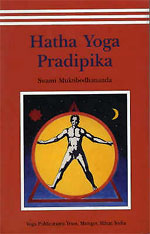
![]()
![]()
Hatha Yoga Pradipika
(Oct 1, 2022 - Jul 5, 2023) While nearly every yogi I meet talks about Patanjali's Yoga Sutras as his/her basis for their practice (which is mostly asana), Patanjali's Sutras actually only mentions one asana - a seated pose that can be held long and comfortably. Obscured from the modern dissertation of yoga is the one book that actually focuses more about the asanas - Hatha Yoga Pradipika.....more »»
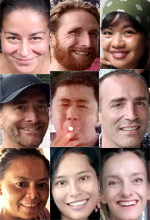
![]()
Chiang Mai Peoplescape
(Jul 31, 2022) I seldom invite people over my place anymore. Usually, it's a coffee gathering at My Moka Coffee instead. Neither do I feel the need to invite friends when I'm not with one. I'm more selective and the first sign of someone being psychologically unbalanced or emotionally disturbed, I simply walk away from. My existential cave simulaton continues. Still, I often find myself with tested friends, and continue to meet new ones. It all works out and I'm better off for it.....more »»
Chiang Mai INFORMATION
Chiang Mai Map

Chiang Mai, Thailand
Chiang Mai FYI / Tips
- crop-burning season in Chiang Mai is between late Feb to early April. But laws change everytime. This year, 2019, there is a 61-day ban on burning so the farmers started burning early. When my plane was approaching Chiang Mai on Jan 24, 2019, there was already a thick blanket of smog covering the entire city (and beyond). But within the city itself, you won't feel it (but that doesn't mean the air is healthy). To monitor air conditions in real time, refer to site: Chiang Mai Air Pollution: Real-time Air Quality Index (AQI)
- hot season begins March and lasts until June
- wet season begins July and lasts until September
- best time to visit Chiang Mai is mid-September to mid-February - after the monsoon and before the burning
- you have to try Khao Soi, this is north Thailand's culinary staple
- the tourist area where most of the hotels, restaurants, ticket offices, tour operators are, is located in the Old City
- to exchange your dollars to Thai Baht, the Super Rich Money Exchange give the best rates. There are many branches scattered around Chiang Mai
- get a red cab (songthao) outside the train station for Baht 50 (instead of paying B100 if inside the train station) to Old City - if you haggle nicely enough...I did!
- shared red taxi (songthao) - B30 standard fare plying all over Old City
- for only B50/day, best to rent a bike to go around the Old City - it's a 2.5km2 with lots to discover
- FREE daily yoga classes from 9:00am to 10:15am at Nong Buak Hard Park (southwest corner of Old City). Resident and passing-through teachers take turns conducting yoga classes.
Blues/Jazz Bars in Chiang Mai
- North Gate Jazz Coop - at Chang Phueg Gate, great Tuesday jam session, Blues on Sundays at 11pm by the Chiang Mai Blues band
- Boy Blues Bar - at the Night Bazaar. Mondays at 9:30pm is open mic
- My Secret Cafe - near Wat Phra Singh. Tuesdays at 7:30pm for the changing front-act and 9:00pm for the Panic Band
- Taphae East - 88 Thapae Rd. (just north of Night Bazaar). Fridays at 9:30pm by Chiang Mai Blues Band
Chiang Mai Cost Index
- B60 Chiang beer
- B250 1 hour drop-in yoga session
- B200 one hour Thai body massage at WAYA Massage (highly recommended)
- B50 noodle soup with meat
- B50 coffee
- B40 pad thai
- B30/kilo wash-only laundry
- B50/kilo wash+iron laundry
- B100-150 dorm bed/night
- B250 fan room/night
- B30 internet cafe/hour
- B170-190 Movies Sat-Sun and public holidays
- B130-150 Movies weekdays
- B100 Movies Wednesdays (movie discount day)
- B750 1/2 day Thai cooking lessons
- B900-1000 1 full day Thai cooking lessons
- B400 Muay Thai boxing ticket
- B2500 starting room rate at the luxury hotel, Nawa Sheeva (highly recommended)
- B450 bus, Chiang Mai to Bangkok
- B160-180 bus, Chiang Mai to Pai
- B1250 bus, Chiang Mai to Luang Prabang
- B1650 slow boat, Chiang Mai to Luang Prabang
- B210 bus, Chiang Mai to Chiang Rai, 3-4 hours
- B360 Green VIP bus, Chiang Mai to Mae Sai (Thai border town for visa run to Tachileik, Myanmar)
- B50 bicycle rental, 24 hours
- B200 motorbike rental, 24 hours
- B273 #51 sleeping train from Bangkok to Chiang Mai
- B638 #7 a/c train from Bangkok to Chiang Mai
- B50 red taxi fare from point to point
- B100 red taxi fare from train terminal to city
- B2000 full day elephant sanctuary
- B750 Chiang Rai one-day tour
- B1500 mountain biking scenic ride
Chiang Mai Trains by Train36.com
- Chiang Mai trains for Bangkok - 2 day trains, 3 night trains, daily schedule
- Train 14 to Bangkok - departs 5pm daily, arrives BKK 6:15am, 1st class and 2nd class sleeping accomodation, Special Express
- Chiang Mai trains to other destinations -
Chiang Mai to Bangkok Trains
source: railway.co.th- Check Train Schedule & Fares
- Book Online - direct booking with State Railway of Thailand. Best to register first. If going to BKK from CNX, click "Northern Line".
note -- big difference between booking direct with the State Railway and booking with an online 3rd party agent. 12GO was charging B1330 for the same trip that only cost me B941 with the State Railway.
note -- Oct 2022, I took the #10 Train from CNX to BKK, upper berth, 2nd class, a/c, sleeper, B941. The train was clean, fast, comfortable and modern. If you have heavy luggage that will cost more money in flight checkin, I would suggest this train. Otherwise, the flight now is so much cheaper it doesn't even make sense to take the bus or train.
Bangkok to Chiang Mai by Train from Bang Sue Train Station
For more train info: Bangkok to Chiang Mai trains - departing from Hua Lamphong - MRT (Bangkok)
(I'm using Bang Sue as a starting point because I was closer to it, but you may be closer to the Hua Lamphong station)
- take the MRT train to Bang Sue Station. Take the #1 Exit to the north provincial trains
- Proceed to Counter 2. You will see an
information booth, a
train schedule chart and the
ticket counter. Choose the train and pay at the ticket counter.

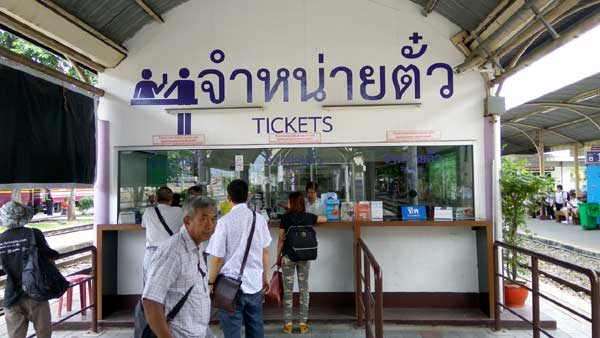
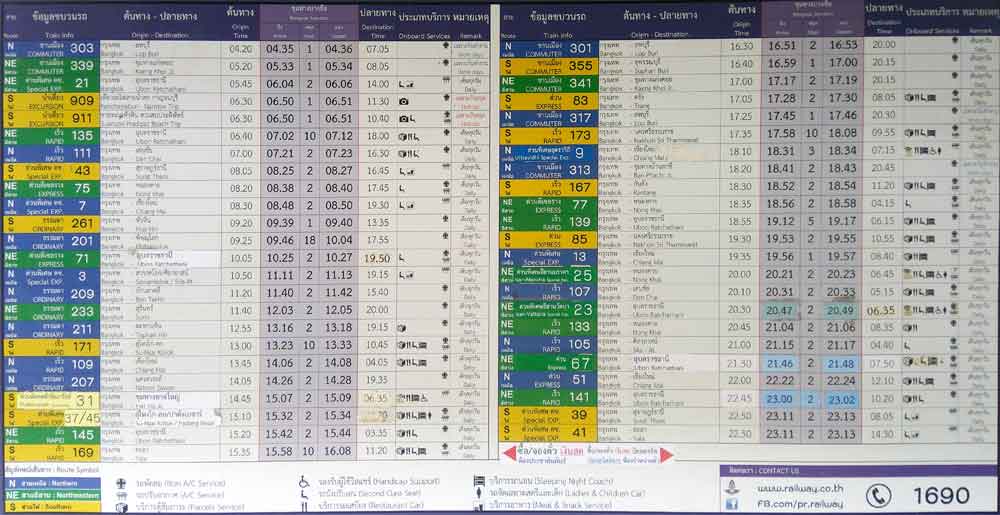
- daily train schedule:
- 8:48am - #7 Train, arrive Chiang Mai 7:30pm, not sleeper, B638
- 2:06pm - #109 Train, arrive Chiang Mai 4:05am, sleeper
- 6:31pm - #9 Premium Train, arrive Chiang Mai 7:15am, sleeper, B938 upper deck, B1038 lower deck
- 7:56pm - #13 Train, arrive Chiang Mai 8:40am, sleeper, B768 upper deck, B838 lower deck
- 10:22pm - #51 Train, arrive Chiang Mai 12:10pm, sleeper, 3rd class B270 (non sleeper), 2nd class B438, B728 upper deck, B798 lower deck
Loei to Chiang Mai by Bus
- From Loei town center, take a tuk-tuk ride to the bus station, B30. There is only one bus station.
- As of June 28, 2020 (still on Covid schedule), there are only 3 night trips: 8:30pm, 9:30pm and 12 midnight. 9 hours, B470.
- The bus makes the following stops at the following times from a 9pm Loei departure: Phu Ruea (9:50pm), Phitsanulok (12:40am), Uttradit (2:20am), Lampang (4:35am)
- Final bus stop is at the Red Bus Arcade, Chiang Mai, 9 hour-trip, arriving 6am (from 9pm Loei departure).
- Take a red songthaew to Old City, B50. They'll try to charge you B100, but they'll take B50 (just assure the driver you won't tell the other passengers).
Chiangmai Blogs by TheLoneRider
- Goodbye Chiang Mai Jan 24, 2019 - Oct 10, 2022
- Chiang Mai Peoplescape Oct 10, 2022
- Siamaya Chocolates Oct 2, 2022 [an error occurred while processing this directive]
- September Snapshots Sep 30, 2022
- Carrot Cake Sep 12, 2022
- Making Coconut Bread Sep 3, 2022
- August Snapshots Aug 31, 2022
- Yoga Nidra with Chunyah and Tom Aug 18, 2022
- Coconut Pancake Aug 11, 2022
- July Snapshots Jul 31, 2022
- Chiang Mai Peoplescape Jul 31, 2022
- Jason, Max and Elizabeth Pizza Nite Jul 28, 2022
- Yakiniku Dinner with Max and Jason Jul 25, 2022
- Icebath at Nawa Saraan Jul 6 - Oct 5, 2022
- June Snapshots Jun 30, 2022
- Tom, Chunyah and Simona Pizza Nite Jun 23, 2022
- Yoga Class Pizza Nite Jun 15, 2022
- Pranayama with Nicha Jun 14, 2022
- May Snapshots May 31, 2022
- Lover's Quarrel May 26, 2022
- Getting Lost on a Hike May 25, 2022
- Biohacker Meetup at 'Living with The Spirit' May 22, 2022
- Music and Magic at Paapu House May 5, 2022
- Breathwork + Icebath @ Alt_Chiangmai II Apr 20, 2022
- April Chronicles 2022 Apr 30, 2022
- Tombstone Epitaph Apr 29, 2022
- Kayaking along the Ping River with the BioHackers Apr 24, 2022 [an error occurred while processing this directive]
- Pizza Nite with Jerry, Paolo and Abby Apr 9, 2022
- Tom Maher's Muay Thai Fight Apr 8, 2022
- Breathwork + Icebath @ Alt_Chiangmai Apr 6, 2022
- Yoga with Leo Apr 5, 2022
- March Chronicles 2022 Mar 31, 2022
- Street Photo Mar 31, 2022
- Peoplescape Mar 31, 2022
- Chiang Mai's Recovering Music Scene Mar 31, 2022
- Street Photo Mar 31, 2022
- Yoga and Fitness Mar 26, 2022
- Friday Bitcoin Meetups Mar 18, 2022
- Pizza Nite with Aida and Sophie Mar 14, 2022
- Pizza Nite with Kevin, Jamie and Kris Mar 10, 2022
- In Search of Genetic Immortality Mar 5, 2022
- February Chronicles 2022 Feb 28, 2022
- Palm-Feeding Wild Birds Feb 26, 2022
- Cuckoo Feb 16, 2022
- Tell John Feb 16, 2022
- Pizza Nite with Kris, Simona and Mary Feb 15, 2022
- Pizza Nite with the Chiang Mai Boyz Feb 6, 2022
- Welcoming the New Year Jan 31, 2022
- January Snapshots Jan 31, 2022
- ABS Fitness Challenge Jan 16 - Apr 16, 2022
- Pumpkin Tahini Recipe Jan 3, 2022
- 2021: A Year in Review Dec 31, 2021
- Pizza Nite with Simona and Lisa Dec 28, 2021
- Tahini Salad Dressing Dec 27, 2021
- Baba Ganoush Recipe Dec 23, 2021
- 7 Universal Laws Dec 20, 2021
- Sacred Circuitry Dec 18, 2021
- Cave-Living in a Boutique Hotel in Chiang Mai Dec 14, 2021
- Tummo Yoga + Wim Hof Breathing + Full-Body Muscle Contraction Dec 13, 2021
- Monk Chat Dec 10, 2021
- Making Tahini and Hummus Dec 8, 2021
- Watering the Plants Hands-Free Dec 2, 2021
- Vietnamese Phin Coffee Filter Dec 2, 2021
- Tummo Yoga Dec 1, 2021
- The Bliss of Inner Fire: Book Summary/Review Dec 1, 2021
- The Bliss of Inner Fire: Heart Practice of the Six Yogas of Naropa Dec 1, 2021
- 'Must Experience' Cafés of Chiang Mai Nov 30, 2021
- British Hobnob Cookies Nov 22, 2021
- New York Cheese Cake Nov 22, 2021
- Dham's Poetry Nov 14, 2021
- Pizza Nite with Simona and Nat Nov 11, 2021
- Stepping Forward / Reaching Out Oct 31, 2021
- Cancel Culture Attack Oct 31, 2021
- Mantra Primer Oct 29, 2021
- Spinal Mobility Oct 7, 2021
- Swedish Cinnamon Rolls [Kanelbullar] Oct 4, 2021
- Just Bring 2 Chinese Oct 3, 2021
- Sep Snapshots Sep 31, 2021
- One-Leg Yoga Asana Sequences Sep 30, 2021
- Pizza Nite with Nut, Monika and Yuki Sep 27, 2021
- 23-Minute Ice Bath Sep 27, 2021
- Pizza Nite with Nut, Simona and Malee Sep 23, 2021
- Yoga Nidra (yogic sleep) Sep 23, 2021
- Making Cornbread Sep 15, 2021
- Kombucha: 2nd Batch Sep 11, 2021
- Making German Stollen Bread Sep 9, 2021
- Pizza Nite with Jackson, Goi and Paapu Sep 6, 2021
- Chiang Mai Peoplescape Aug 31, 2021
- Making Homemade Kombucha Aug 30, 2021
- Wrong Question to Ask This Crowd Aug 29, 2021
- Pizza Nite with Tom, Chunyah and Goi Aug 20, 2021
- Pizza Nite with Moms and Kids Aug 15, 2021
- Bahya Kumbhaka (breath-hold on the exhale) Aug 14, 2021
- Everybody's Only Friend Aug 13, 2021
- Vanillekipferl (German Vanilla Crescent Cookies) Aug 11, 2021
- Fighting Infection through Yoga Aug 3, 2021
- Too Close for Friendship Aug 2, 2021
- Manifesting: Epicurus' Pursuit Jul 31, 2021
- Homemade Rum Raisin Ice Cream Jul 30, 2021
- Ice Bath at Nawa Saraan Healing Space Jul 25, 2021
- Pizza Nite + Slack Line + Hammock Jul 23, 2021
- Yin-Yoga & Hypnosis with Christine Thiel Jul 20, 2021
- Pizza Nite with James and Nat Jul 19, 2021
- Antara Kumbhaka on Nadi Shodan Pranayama: Yogic Breath-Hold on the Inhale Jul 17, 2021
- Moving and Cashing-Out Bitcoin Jun 2 - Jul 11, 2021
- 'The Bow' Yoga Jul 7, 2021
- Yoga Classes with Calum Mar 27 - Jul 4, 2021
- Hike to Wat Pa Thammachat Waterfall Jul 2, 2021
- Pizza Brunch with the Yogis July 1, 2021
- Continuing Friendships in Chiang Mai Jun 30, 2021
- On the Brink of Hunger, the ENABLERS Come to Light Jun 21, 2021
- Hatha Vinyasa Yoga with Katharine Day Jun 17, 2021
- Pranayama Basics II Jun 16, 2021
- 36-Hour Love Life Jun 11, 2021
- Pranayama Basics I Jun 9, 2021
- Biohackers Meetup in Chiang Mai Jun 6, 2021
- Learning How to Breathe Jun 2, 2021
- Not the Usual Day-to-Day Life May 31, 2021
- Morphing Peoplescape of Chiang Mai May 31, 2021
- Breathwork & Ice Bath with Jason Ryer of Zen Strength May 23, 2021
- It's Raining Bell Peppers May 7, 2021
- Yoga Classes with Nana Apr 20, 2021
- You Want to be Wonder Woman? Apr 8, 2021
- Kunjal Kriya / Vamana Dhauti (induced vomiting) Apr 1, 2021
- Coffeemates, Breadmates and Yogamates in Chiang Mai Jan-Mar 2021
- Varisara Dhauti (cleansing of the entire digestive tract) Mar 26, 2021
- Spiritual Backpacker Interview by Napasorn 'Cherry' Suvarnapradip Mar 23, 2021
- Private One-on-One Yoga Classes with Doriana Feb 17 - Mar 14, 2021
- Transformational Life Events Mar 13, 2021
- Guess Who's Coming to Bread Day? Mar 1, 2021
- Mula Shodhana (anal cleansing) Feb 27, 2021
- Are You My Queen? Feb 25, 2021
- Breaking the 5-Minute Breath-hold Barrier Feb 25, 2021
- Kirtan with Chiang Mai's Khun Thai Seekers Feb 7, 2021
- Breaking the 4-minute Breath-hold Feb 7, 2021
- Pranayama Primer Feb 2, 2021
- Heartbreak in every Song Jan 24, 2021
- The Silent Killer is Baaack! Jan 12, 2021
- Learning the Thai Language Jan 9, 2021
- 2020: A Year in Review Dec 31, 2020
- Reversing/Slowing Down the Aging Process Dec 30, 2020
- Hike to Huay Keaw Waterfall Dec 20, 2020
- Yoga Mat Dec 19, 2020
- Hiking to Wat Pha Lat along the Monk's Trail Dec 19, 2020
- Am I Psycho? Dec 9, 2020
- Muffin Man Dec 8, 2020
- Polyamory Dec 4, 2020
- The Wim Hof Ice Bath Dec 3, 2020
- RSVP Nov 25, 2020
- High Intensity Interval Yoga (Yoga + HIIT) Nov 14, 2020
- Cleansing the Nadis (Energy Pathway) Nov 13, 2020
- Yoga for a 360-degree Core Nov 6, 2020
- Edward Witten: 'the smartest living physicist' Nov 4, 2020
- Srinivasa Ramanujan: Mathematician of the Divine Oct 27, 2020
- Bashar as Channeled by Darryl Anka Oct 26, 2020
- Vinyasa Krama and Ashtanga Yoga with Aida Yoga Oct 18, 2020
- Deepak Chopra: author, lecturer, healer Oct 12, 2020
- Facebook Friends Oct 1, 2020
- Chiang Mai Peoplescape Aug-Sep 2020 Sep 30, 2020
- Siddhis (yogic super powers) Sep 30, 2020
- Learning the Import/Export Trade Sep 4, 2020
- Music and Magic at Justin's Birthday Bash Sep 3, 2020
- Biggest Stone in his Shoe Sep 1, 2020
- Abandoned Aug 25, 2020
- Intelligent Romantic Break-up Aug 25, 2020
- Dad-Zoned Aug 18, 2020
- Public Display of Affection Aug 9, 2020
- Gabriella's Birthday Bash at Mothership Resort Aug 8-9, 2020
- Shifting Peoplescape of Chiang Mai July 31, 2020
- Yoga Class for Strength and Muscle Jul 30, 2020
- Yoga Class for Optimum Digestion July 29, 2020
- Yoga Class for Healthy Eyes Jul 27, 2020
- Hippie Night at Nawa Saraan Healing Space July 24, 2020
- The Podcast Series: Alan "Heart Math" Strydom Jul 17, 2020
- Prana Vayu Adhitthana Yoga Class July 11-12, 2020
- Coming Back to Chiang Mai Jun 29, 2020
- Goodbye Chiang Mai Jan 23, 2020
- Prasnopanishad: Understanding Prana Jan 17, 2020
- Hiking the Monk's Trail Jan 15, 2020
- Chaturanga Jan 10, 2020
- You Spooned Me Jan 3, 2020
- 2019: A Year in Review Dec 31, 2019
- Friends, Coffeemates and Breadmates (Dec 2019) Dec 31, 2019
- Visiting Mae Sot Dec 27-30, 2019
- Let's Make it About You - an Epiphany Dec 17, 2019
- Shut-Up! Dec 7, 2019
- Roasted Red Bell Pepper Puree Dec 3, 2019
- Coffeemates and Breadmates (Nov 2019) Nov 30, 2019
- Bhujangini Mudra Nov 25, 2019
- Mathangini Mudra Nov 24, 2019
- Kaka Mudra Nov 23, 2019
- Pasini Mudra Nov 20, 2019
- Aswini Mudra Nov 18, 2019
- Sambhavi Mudra Nov 16, 2019
- Manduka Mudra Nov 15, 2019
- Tataka Mudra Nov 14, 2019
- Sakti Calana Mudra Nov 10, 2019
- Vajroli Mudra Nov 9, 2019
- Coffeemates and Breadmates (Oct 2019) Oct to Nov 5, 2019
- Yoni Mudra Nov 1, 2019
- Viparita Karani Mudra Oct 31, 2019
- Khecari Mudra Oct 30, 2019
- Mahadeva Mudra Oct 28, 2019
- Sacred Cacao - Chakra Dance Journey Oct 26, 2019
- Partner Healing with Natascha Oct 24, 2019
- Maha Bandha Mudra Oct 24, 2019
- Point-Of-Failure Birthday Workout Oct 22, 2019
- Mula Bandha Mudra Oct 21, 2019
- Hugfest at Thapae Gate, Chiang Mai Oct 19, 2019
- Anushasan Mudra Oct 18, 2019
- Ling Mudra Oct 17, 2019
- Jalandhara Bandha Mudra Oct 15, 2019
- Learning Thai with Cee Oct 13, 2019
- Uddiyana Bandha Mudra Oct 10, 2019
- Nabho Mudra Oct 9, 2019
- Maha Mudra Oct 7, 2019
- 20 Essential Mudras by T. Krishnamacharya Oct. 6, 2019
- Mindfulness Gong Bath by Vee (Veerayuth Pongsiri) Oct 3, 2019
- Cuddle Party by Abundant Love CM Oct 1, 2019
- Vayu Mudra Oct 1, 2019
- Visa-Run to Tachileik, Myanmar Sep 28, 2019
- Sankalpa Mudra Sep 27, 2019
- Surya Pradarshini Mudra Sep 26, 2019
- Eye-Gazing at Heart Space Sep 20, 2019
- Prana Vayu (Pranic Wind) Sep 20, 2019
- 2-Week Yoga Challenge by Agnese Erba Sep 17, 2019
- The Mudra Project Sep 13, 2019
- Sunday Vinyasa Flow with Marina Forster Sep 8, 2019
- Shamanic Breathwork by Rachel Constantino Sep 4, 2019
- The Conscious Peoplescape of Chiang Mai Aug 31, 2019
- Of Winos and Yogis Aug 26, 2019
- The 9 Jhanas of Buddha Aug 22, 2019
- Wicked Game: Anger and Pain August 19, 2019
- Full Moon Ceremony at Heart Space Aug 15, 2019
- Yin Yoga - Water Element by Martina Barabas Aug 15, 2019
- Hatha Mix Yoga with Christin Aug 13, 2019
- Boy Blues Bar Rocks Chiang Mai Aug 5, 2019
- Back to my Beloved Chiang Mai Aug 1, 2019
- Kaleidoscope of Chiang Mai's Peoplescape July 27, 2019
- Secret Sunrise: Nelson Mandela International Day July 17, 2019
- Farewell Picnic with Alan and Nicola July 15, 2019
- Secret Sunrise: Water July 3, 2019
- Hotel Review: Arun Suite June 27, 2019
- Bruce Lipton: Epigentics to Transcend Genes June 24, 2019
- Optimizing Life thru Heart Math May 8, 15 and 22, 2019
- Connective Cacao and Sound Journey June 12, 2019
- Chiangmai BLUES June 6, 2019
- Hatha Slow Flow with Neil Jefferson June 3, 2019
- Meditating with One Million Meditators Movement June 1, 2019
- Vinyasa Happy Flow Series by Vaida May 31, 2019
- Muay Thai at the Chiang Mai Boxing Stadium May 30, 2019
- Yoga Flow Through the 7 Chakras by Sabrina Pilz May 30, 2019
- The Outsiders (people you need to push out of your sacred circle) May 31, 2019
- Fascinating Peoplescape of Chiang Mai May 22, 2019
- World Meditation Day at Heart Space May 21, 2019
- Abs Yoga by Gigit May 12, 2019
- Kundalini and Vinyasa Yoga with Nicola Symons May 10, 2019
- Secret Sunrise Interactive Dance May 9, 2019
- Tok Sen Massage from Ying May 8, 2019
- Bruschetta: Nawa Saraan Style Apr 22, 2019
- Thai Cooking at Pra Nang Thai Cookery School Apr 20, 2019
- Bonding with the Elephants in Chiang Mai Apr 11, 2019
- Ziplining in Chiang Mai with Eagle Track Zipline Apr 10, 2019
- Getting Thai Massage from Chiang Mai's Best (Lar Thanakrit Khamtanong) Mar 21, 2019
- Being the Soul of Nawa Saraan Hotel Mar 18, 2019
- Peoplescape of Chiang Mai Jan 24 - Mar 13, 2019
- Curing Cancer with Yoga? Feb 21, 2019
- International Training Massage School (ITM): Level 1 Feb 11-15, 2019
- Sandesch Album Launch by Christoph Joerg Feb 13, 2019
- Meditation in a Sensory Deprivation Tank at Float Chiang Mai Jan 29, 2019
- Reiki Share at the Mastermind Brain Spa Jan 26, 2019
- Resuming Life in Chiang Mai Jan 24, 2019
- 4 Days in Chiang Mai at Nawa Saraan Hotel Jan 2-6, 2019
- Mike Chong Aug 8, 2018
- An Intimate Conversation with my Universe in Chiang Mai Aug 8, 2018
- Kneaded and Pampered at Zira Spa Aug 4, 2018
- Savoring a Baht 3,500 Birds Nest Soup at Natural Bird Nest by Burapa Aug 3, 2018
- Yoga Exploration at The Yoga Tree with Gernot Aug 1, 2018
- Laughter Yoga with Saffiya Arnous July 31, 2018
- Yoga with Adam at Hidden House Yoga, Chiang Mai July 29, 2018
- 2 Weeks in Chiang Mai July 25 - Aug 7, 2018
- A First Timer in Chiang Mai Apr 9-23, 2016
- Chiang Mai's Amazing Peoplescape Apr 9-23, 2016
- Dance Mandala in Chiang Mai at The Yoga Tree Apr 19, 2016
- Songkran Waterfight Festival in Chiang Mai Apr 13-15, 2016
- Border Crossing from Siem Reap (Cambodia) to Bangkok (Thailand) to Chiang Mai April 9-10, 2016
Travel Tips for Thailand
How to Get a 60-Day Thai Tourist Visa and then Extend by another 30 Days
This process is BEFORE Covid 19. Not sure what it is now.
- Bring the following to the Thai embassy:
a) proof of money (bank statement will suffice)
b) flight booking to Thailand
c) onward flight back to your country from Thailand
d) filled-in tourist visa form
e) 2 passport pictures
f) hotel booking in Thailand (they didn't ask me for this but better be safe)
g) passport with at least 6 months validity - After handing over all the documents, they will ask you to come pick your passport with the visa the following day from 4 to 5pm. That's it!
- NOTE: after 2 successful attempts, I was already questioned the 3rd time.
60-Day Thai Tourist Visa
NOTE: There is no need to go back to your country to get the Thai tourist visa. Any major city with a Thai Embassy will do. Apparently there is also no need to have an invitation from a Thai establishment to justify the visa.
- bring the following to the Immigration Office:
a) passport (make sure your Tourist Visa hasn't expired yet)
b) Baht 1900
c) photocopy of your passport + visa duration date stamp + TM6 card (white immigration card) and sign all the copies
d) completed TM7 visa extension form (available at the Immigration Office)
e) one 4cmx6cm passport picture - submit the above to the Front Desk. They will give you a stub with your number on it. Take a seat and wait for your number to be called
- when your number is called, your picture will be taken. Then go back to your seat. They will call you again.
- when they call you again, they'll give you your passport with your extended visa. That's it!
- when there are no lines, the whole process can take only 10 minutes
30-Day Extension
NOTE: When your 60-day visa is close to expiry and you want to extend your stay. No need to leave Thailand.
Book Train Tickets in Thailand
Book Train Tickets in Thailand Online by Train36.com
General Travel Tips
- arrive early - in case there is a snag (visa snag, documentation snag, transport ticket snag, etc.), you will have ample time to troubleshoot the problem if you arrive early (to the airport, to the bus terminal, etc.)
- put detailed itinerary on the Calendar apps of your smart-phone according to timelines - this is where you do all your thinking and planning. Once written down, you don't have to think anymore while you are on the journey...you just follow the steps. This frees your mind for something else that might happen while you are already en route
- avoiding scams - as a general rule, I ignore the touts or anyone I don't know who call out to me. The calling comes in many forms - "Hi! Where are you from?", "Excuse me! Excuse me!", "Where are you going?". I don't look them in the eye and I remain non-verbal with them. If you reply to them, you just gave them an 'in' to hound you. In order not to look rude, I smile and wave the 'not interested' hand to them, without looking at them.
- power bank - hand-carry your power bank. Do not check it in. You can be called in when you are already inside the plane to go all the way to the loading dock so you can personally remove the power bank...and chances are, you'll have to surrender it to them. And you might delay the plane departure!
Currency Converter
»» back to Book Review
»» back to Homepage
ARCHIVE 2025:
JAN |
FEB |
MAR
1970 |
1973 |
1975 |
1976 |
1977 |
1979 |
1981 |
1996 |
2000 |
2001 |
2002 |
2003 |
2004 |
2005 |
2006 |
2007 |
2008 |
2009 |
2010 |
2011 |
2012 |
2013 |
2014 |
2015 |
2016 |
2017 |
2018 |
2019 |
2020 |
2021 |
2022 |
2023 |
2024 |
2025 |
ALL BLOGS
